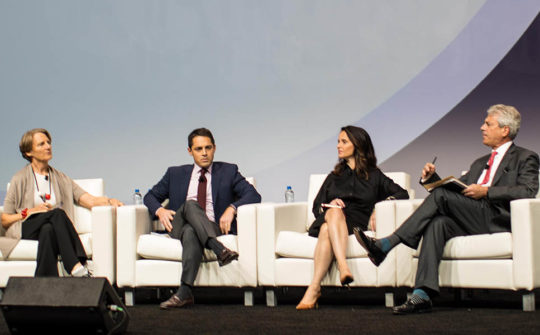
The COVID-19 outbreak delivered a severe and rapid shock to the U.S. economy, and the recovery will not be nearly as fast-moving. However, the Real Estate Economic Forecast released in May 2020, pointed to a U.S. economy that had likely already hit bottom, with growth resuming in the second half of the year expected to soften some of the blow. The forecast was discussed on a webinar hosted by Anita Kramer, senior vice president with the ULI Center for Capital Markets and Real Estate.
The ULI forecast for 2020 called for a 6 percent drop in annual gross domestic product (GDP) and unemployment that would more than triple recent levels to reach 11.3 percent by year-end. But the three-year forecast predicted a big bounce to GDP in 2021 and 2022—3.9 percent and 3.6 percent, respectively—which would be the highest growth levels since before the 2008–2009 Great Recession.
It will take longer for employment to recover, with the former tight labor market giving way to unemployment that will remain elevated at 5.9 percent at the end of 2022, the forecast said. The semiannual forecast is based on a survey in early May of 38 economists and analysts at 34 leading real estate organizations.

ULI members can access a recording of the webinar on Knowledge Finder.
“I think the survey is about right and it is close to PNC’s forecast,” said Stuart Hoffman, senior vice president and senior economic adviser at PNC Financial Services Group. Hoffman was a participant in the survey and took part in the May 19 webinar discussing the results. PNC’s assumption was that April was likely the bottom of the downturn, with a drop in GDP for the second quarter that could reach 35 percent and peak unemployment close to 20 percent. PNC was predicting a U-shaped economic recovery for the second half of the year.
However, the “about right” read on the Institute’s forecast came with crossed fingers due to uncertainty related to the path of the virus and the time it would take to develop an effective vaccine, Hoffman cautioned. The risk is that the impact on the economy could turn out to be more negative, especially if there were setbacks in the reopening or if there were a second wave of the virus in the fall, he said.
The key to the forecast recovery would be how the United States moves through its recovery, which will likely involve three phases, said fellow panelist Suzanne Mulvee, senior vice president, research and strategy, at GID Real Estate Investments. The first phase is where the country was at the time of the survey, with all 50 states in various stages of reopening and easing stay-at-home orders. The second phase would be a “reset” of the economy that included bringing people back who had been furloughed, as well as a likely spike in business and sales from pent-up demand.
The third phase would involve a broader recovery, and what that recovery ultimately would look like remained to be seen, said Mulvee. Variables would be how many businesses would end up closing permanently and how many of the 32 million people furloughed or laid off due to COVID-19 would be called back and at what capacity. Even though the shock to the economy was severe, the recession involved some distinct differences from others that could lessen the blow to commercial real estate.
Explore


